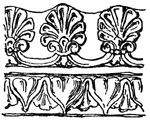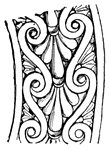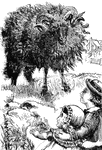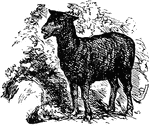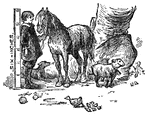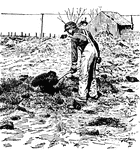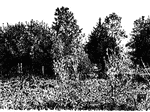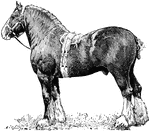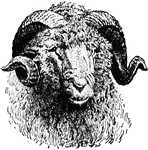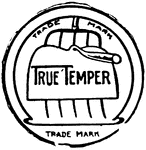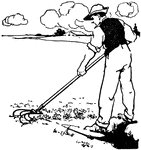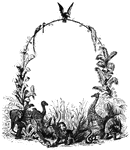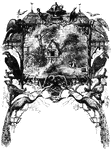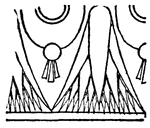
Conventionalized Lotus Flower
The lotus flower has been called the sacred flower of Ancient Egypt. As a border ornament, the lotus…
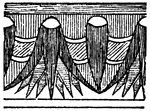
Conventionalized Lotus Flower
The lotus flower has been called the sacred flower of Ancient Egypt. As a border ornament, the lotus…

First Minnesota Regiment
"Fort built around the officer's quarters of the First Minnesota Regiment, Colonel Sully, near Fair…

Battle of White Oak Swamp Bridge
"Battle of White Oak Swamp Bridge, Monday June 30th, 1862- Ayres's, Mott's and Randall's batteries checking…
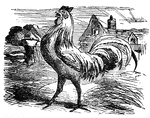
House that Jack Built—Cock
This is the Cock that crowed in the morn, that waked the Priest all shaven and shorn, that married the…
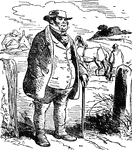
House that Jack Built—Farmer
This is the Farmer that sowed the corn, that kept the Cock that crowed in the morn, that waked the Priest…

Battle of Chancellorsville
"Battle of Chancellorsville, Va., Friday, May 1st, 1863. We give a fine sketch of the point where the…
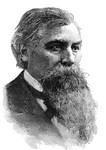
General Jeremiah M. Rusk
"General Rusk, born in Morgan County, Ohio, June 17th, 1830; died in 1894. He divided his time between…
!["The war in Virginia- contrabands coming into the Federal camp. The [African American] furnishes, in his various phases of existence, wonderful studies for the artist and philosopher. Never, perhaps, has a race seen such a moment as during the Civil War, when the chains of bondage were breaking from the limbs of 4,000,000 of men. The distant roar of battle was to them a sound of deliverance. With all the uncouth, odd and queer manifestations of joy they prepared to reach the camp of the delivering Yanks. Yoking together most incongruous teams before the farm wagons of their fled masters, with ass and ox and horse, with household gear queerly assorted, with useless truck and little that could rarely serve them, they started for the Promised Land, and might often have been seen coming in as our artist, a most close student of nature, depicted them, with his usual felicity of portraiture."— Frank Leslie, 1896](https://etc.usf.edu/clipart/11700/11752/contrabands_11752_mth.gif)
Contrabands
"The war in Virginia- contrabands coming into the Federal camp. The [African American] furnishes, in…

Battle of Spottsylvania
"The war in Virginia. Battle of Spottsylvania Courthouse- opening of the fight at Alsop's Farm, May…
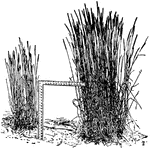
Pair of timothies
A pair of timothy plants growing side by side, illustrating the difference in yield. Each one grew from…
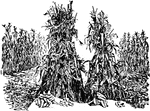
Ear-row Test
Yields of adjacent rows in an ear-row test, showing the difference in yielding power of two ears that…
Roller
A roller. Crushes clods and packs the surface so as to keep the seed moist at the expense of increased…

Manure Spreader
A manure spreader in operation. The manure was pitched from the stable to the spreader, handled only…

Buckwheat field
A farmer standing waist-deep in a field of buckwheat on land that was plowed early and well fitted.

Buckwheat field
Farmer standing in a sparse and stunted field of buckwheat, which was on land that was plowed late.
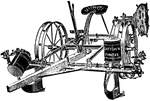
Check-Row Corn-Planter
A check-row corn-planter, which plants two rows at once and rows the corn both ways.
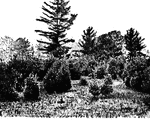
Pasture with Trees
White pines coming into a pasture. On this land trees pay better than the poor pasture.

Grove of black-locust trees
A grove of black-locust trees. Contrast with the brush in the background on an adjoining farm.
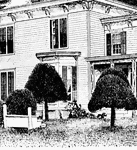
Side View of Farmhouse
Scattered planting of trees pruned in artificial shapes in front of a farmhouse.

Farmhouse
A well-planted farmyard, with trees at the sides, flowers in the corners and about the house, and an…
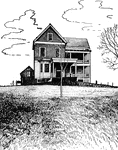
City House
A city house in the country. A low house would be better suited to sitting alone on a hill.



